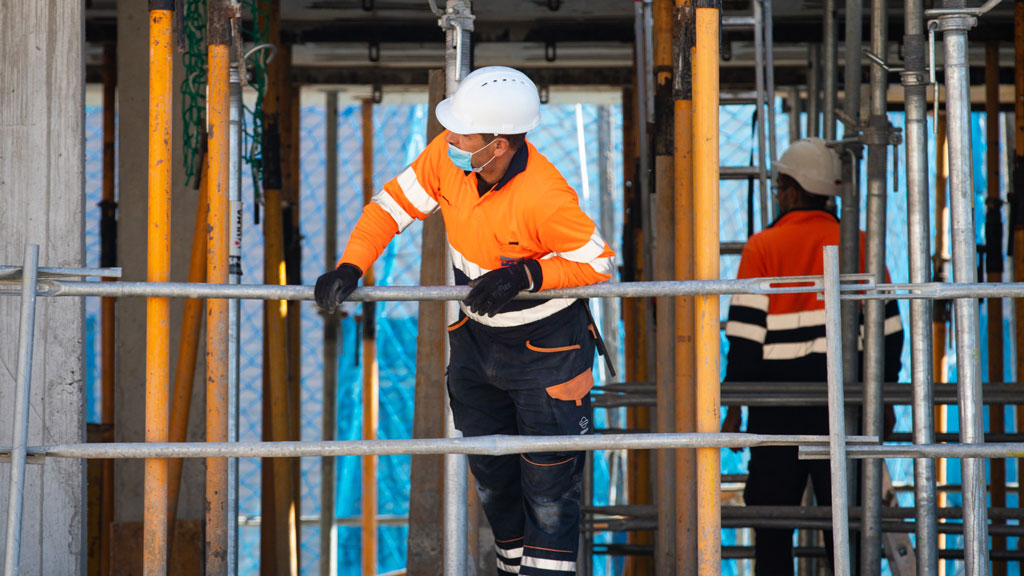One of the few positive aspects of the COVID-19 pandemic is that some companies have taken it upon themselves to review the way they do their health and safety.
Recent examples close to home are two studies on handwashing and cleaning and disinfection of high-touch surfaces that were commissioned by the Vancouver office of Ledcor Construction Ltd., which has 18 Lower Mainland construction sites that employ around 3,000 workers.
“We invited external consultant VanDriel OHS Consulting (VOHS)
to audit our protocols and procedures,” said Barry McCarty, Ledcor’s senior manager of health and safety. “The consultant identified a couple things we could tweak to be more effective.
“More importantly, having an external consultant review our protocols and finding them current with Public Health Authority guidance and science gave us and our workers peace of mind that we had a good system in place to protect everyone as best we could.”
McCarty said handwashing and cleaning and disinfecting of high-touch surfaces is important because hands and surfaces can help transmit COVID-19.
“The studies are related directly to each other and provide useful and interesting information that validated and improved our practices and processes,” he said.
And at a time when many people were tuning out the first set of warnings, the studies updated the message that handwashing and cleaning during the pandemic are important.
According to the Canadian Centre for Occupational Health and Safety, handwashing is the single most effective way to prevent the spread of infection.
The BC Centre for Disease Control (BCCDC) recommends washing hands with soap and water for at least 20 seconds when visibly dirty.
“Hands are a critical vector for transmitting microorganisms, the cross‐transmission of these organisms to others occurs when we fail to wash hands effectively,” said McCarty.
“Handwashing is something most people think they do well. But without visible evidence to the contrary, it’s impossible to say otherwise.”
VOHS conducted the handwashing study on several of Ledcor’s construction worksites in the Lower Mainland. A total of 353 construction workers and administrative staff from four construction sites took part.
The study involved applying a special handwashing gel to the hands of the participants, who then washed their hands with soap and water at hand-washing stations on the work site.
Next, an ultraviolet (UV) light was shone on each participant’s hands. The UV light lit up any gel that remained on the hands, which showed the areas that handwashing had missed.
The study showed the most frequently missed areas of the hands were the wrist (due to wearing a watch or a bracelet); between the fingers, especially between the thumb and index finger and between the index finger and the middle finger; underneath fingernails; along knuckles; and just below the fingers on the palm of the hand.
The second study, the one dealing with cleaning and disinfection, took place at three Ledcor Lower Mainland construction sites.
The purpose of the study was to determine if high-touch surfaces were being routinely and effectively cleaned and disinfected during the COVID-19 pandemic.
Approximately 40 swab tests were performed on 20 different surfaces at each construction site.
The top five most contaminated surfaces were wash faucets, power tool handles, door handles and handrails, sanitizer and soap dispensers and the inside handle of portable toilet doors.
The top five cleanest surfaces, on the other hand, were orientation tables, microwaves, scissor lift handles, work gloves and refrigerator handles.
According to the BCCDC, the main route of COVID-19 transmission is through larger droplets at close range, followed by smaller droplets at longer ranges.
Contaminated hands and surfaces, on the other hand, are less of a threat.
Nevertheless, said the VOHS study, “cleaning of contaminated surfaces as an administrative control in the hierarchy of controls for transmission plays a role along with the other control measures such as physical distancing, health monitoring, wearing of face coverings, hand washing etc. and will continue to be incorporated into a construction site’s plan to prevent COVID-19.”
McCarty said handwashing and cleaning and disinfecting will be important components of a worksite hygiene plan to prevent the spread of colds and influenzas in the fall.
“COVID-19 has caused workers and employers to think differently about their health and exposure to viruses,” said McCarty. “Workers and employers will expect workplaces to continue with these protocols to keep them and their families free from illness.”
Ledcor has created two Safety Talks that are based on the VOHS studies, called Effective Hand-Washing During COVID-19 and Effective Cleaning and Disinfecting for COVID-19.
They are available by contacting Barry McCarty at barry.mccarty@ledcor.com.



Recent Comments